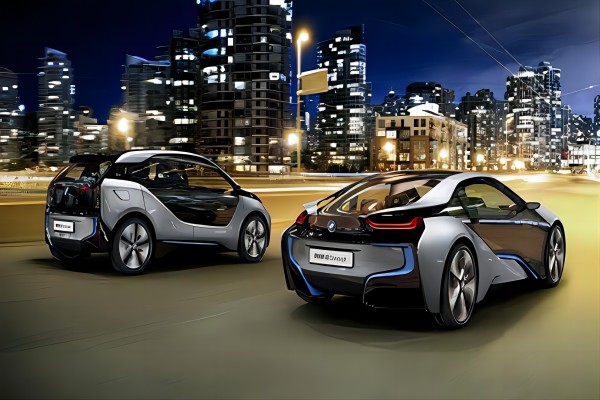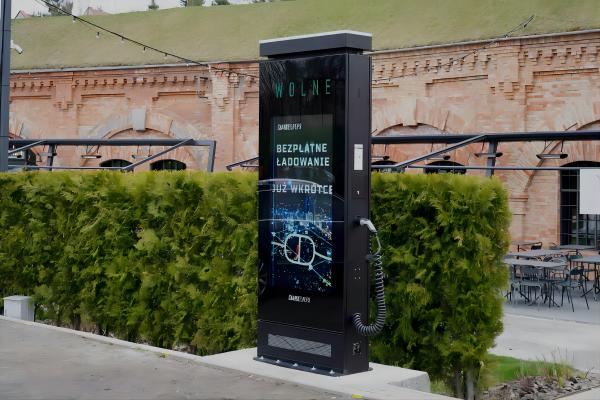The automotive industry is one of the main areas in the global governance of greenhouse gas emissions. In order to achieve the goal of “carbon neutrality and carbon peaking”, the Chinese government is further promoting the accelerated development of the new energy vehicle industry. Driven by this, the demand for supporting infrastructure has brought new opportunities for advertising charging piles. The business model of overseas charging service provider Volta is being replicated in China.
Electric vehicle sales surge 164% in 2021
With favorable policies, as well as increased production and lower prices of power batteries, Chinese consumers are increasingly accepting new energy vehicles, and the industry is on the track of rapid development. According to statistics from the Transportation Administration of the Ministry of Public Security, in recent years, the proportion of new energy vehicles in the total number of vehicles has been rising. In 2021, the proportion will be 2.6%, and the number of new energy vehicles will be 7.84 million.
Among them, the number of pure electric vehicles in 2021 will be 6.4 million, accounting for 81.6% of the total number of new energy vehicles, a year-on-year increase of 60%, and the new ownership in that year will be 2.4 million. In fact, new holdings are almost equal to annual sales, so sales in 2021 will increase by about 164% year-on-year, the highest increase in nearly five years.

The vehicle-to-pile ratio is stable but far from enough, and the business model value of advertising charging piles is explored
In order to enhance the convenience of using new energy vehicles, the central and local governments have continued to issue policies to support the supporting infrastructure construction of electric vehicle charging piles. According to the research conducted by RUNTO, from 2016 to 2021, the vehicle-to-pile ratio of electric vehicle charging piles in China has dropped from 3.33:1 to 2.45:1, and the charging facilities are improving in the general trend. In the past five years, the vehicle-to-pile ratio of China’s new energy vehicles has basically remained at 2.5:1, indicating that the construction of charging piles is only an effort to keep up with the growth of electric vehicles. In 2021, the number of charging piles in China will be 2.62 million units, which is slightly lower than the growth rate of electric vehicles, and the vehicle-to-pile ratio will slightly rebound to 2.45:1.
The Chinese government proposed in the “Guiding Opinions on Accelerating the Construction of Electric Vehicle Charging Infrastructure” that by 2030, the vehicle-to-pile ratio should be 1:1. Therefore, the current vehicle-to-pile ratio of 2.5:1 is still very insufficient. The fundamental reason for the stagnant vehicle pile ratio is that the development of existing charging piles is largely maintained by government subsidies, and the industry’s spontaneous enthusiasm is not high. To ensure that the charging pile industry enters a virtuous circle, it is necessary to have a viable profit model.
One of the solutions being explored is the advertising charging pile, which is provided with a large-size display screen on the outside of the charging pile body that is clearly used for advertising. Therefore, the advertising charging pile is the product of the integration of outdoor advertising machines and new energy charging piles. As a good media carrier, it can make up for the profitability of charging piles and accelerate the process of urban media utilization.
Volta Industries, an electric vehicle charging network company listed on the New York Stock Exchange, is engaged in a business model: drivers can use its charging piles outside high-end shopping malls and supermarkets to charge for free, and its operating income depends on the 55-inch electronic display installed on the charging pile. Advertising on the screen. The target audience of the advertisements is affluent and environmentally conscious high-end users.
After Volta even opened free fast charging piles, eligible electric car owners can get half an hour of free charging. Half an hour is equivalent to obtaining about 282 kilometers of free cruising range on a 100kW fast charging pile. According to the electricity cost in North America, it can save about RMB 43-57. After half an hour, electric vehicle owners can continue charging by paying. For business districts, the location of fast charging stations can attract high-end customers and extend reception hours, and sponsor brands can use these stations to increase their influence.
Volta’s competitors Charge Point and EVgo have also gone public through SPACs. This business model is being replicated by Chinese charging service providers.

The penetration rate of charging piles with screens is 20%, and 30,000 advertising charging piles are shipped
Charging piles are divided into public charging piles and private charging piles. At present, advertising charging piles are basically public charging piles. According to RUNTO data, in 2021, the number of public charging piles will be 1.09 million, an increase of 290,000 compared with the previous year. The penetration rate of charging piles with screens is 20%, and the annual shipment will be 58,000. .
The screen loaded by the charging pile with screen is still mainly small in size, covering 3.4 inches, 7 inches, 10.1 inches to 15 inches. However, these products are limited in size and cause little visual impact to users. The conversion rate and value of advertising investment are difficult to quantify scientifically, and it is generally believed that it is difficult to achieve expected returns.
Digital signage companies in the commercial display industry have launched advertising-style charging piles, with a screen size of more than 30 inches, accounting for only 5% of the overall charging piles with a screen in 2021, and shipments of about 3,000 units. In terms of subdivision size, there are more 42/43-inch and 32-inch products, accounting for 32% and 28% respectively.
2030 government targets bring considerable expectations for advertised charging piles
Under the dual drive of supporting market demand and policy dividends, it can be predicted that the charging pile industry will usher in development opportunities. In addition to charging operators, with the participation of media operators and digital signage companies, the problems of low advertising efficiency of charging piles, narrow audience, and difficult to quantify effects may be gradually solved.
In 2022, global electric vehicle sales will exceed 6 million. Global public EV charging piles will reach 2.5 million units, an increase of 1 million units from 2021.
According to the forecast of RUNTO, the Chinese market will reach 3 million vehicles in 2022, an increase of 25% over 2021, and the number of vehicles will increase to about 9.4 million by then. According to the vehicle-to-pile ratio of 2.45:1, the Chinese market will reach 3.8 million units of charging piles, of which the estimated shipment of public charging piles will be 500,000 units, and the number of units will reach 1.6 million units. It is estimated that 120,000 units of charging piles with a screen will be shipped, of which the proportion of advertising charging piles will increase from 5% to more than 10%, and the shipment will exceed 10,000 units for the first time.
Although the scale of shipments seems to be relatively small, considering that the Chinese government requires car companies to achieve 40% of the total sales of electric vehicles by 2030, and the two firm goals of achieving a vehicle-to-pile ratio of 1:1, it can be judged optimistically. The advertising machine market on charging piles in mainland China is in the brewing stage, the time window has opened, and the running of the business model will become the key before the market takes off.














